We ‘re More Than a Boat Ride… We Make Memories!
Orange Beach’s Dolphins in the Wild!
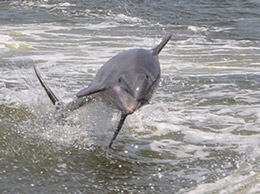
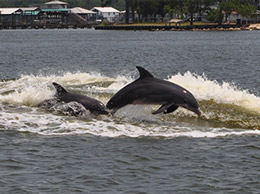
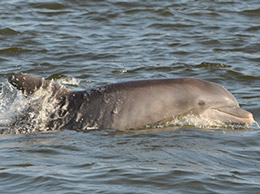
Delphinis is latin word for Dolphin
Cetacean is the Greek word for Dolphin
Here in Orange Beach Alabama our trip with your family will include a family Dolphin Safari no matter which package you have chosen. We see dolphin 97% of the time. We will be going on a real safari by boat to encounter these magnificent mammals and hopefully their calves ( I call them pups ! Because they are really cute ! )
REMEMBER THESE ARE BREEDING DOLPHIN IN THEIR NATURAL ENVIORNMENT ! THIS IS NOT SEAWORLD :/
We are only their guests in their home… so with that being said None of our Captains have a ‘Bruce Almighty Shirt ‘ to make them either magically appear or behave a particular way. (At Least I don’t think they have one ![]()
We are in constant contact with Grey Bottle Nose here in Dolphin Beach. And in this professed sion and we know that if we behave accordingly Dolphins will react accordingly providing us all with a one of a kind of encounter !!
However not every family member has the same interest in dolphin but there is no denying that when we come across a pod in the wild everyone is excited ! Including me and I have been doing this for a long time !! ![]()
Dolphins are active predators and eat a wide variety of fishes, squids, and crustaceans such as shrimp. The foods available to a dolphin vary with its geographic location.
Orange Beach Coastal dolphins tend to eat fishes and bottom-dwelling shrimp and crabs. Offshore dolphins tend to eat fishes and squid.
Some offshore dolphins were found with deep-sea fishes in their stomachs. Offshore dolphins may dive to more than (1,600 ft.). Here in Orange Beach bay waters, we will sometime see them school their breakfast lunch and dinner Right on up to a beach or reed area like their cousins THE Orca Pretty Cool Right !
So the way to find Dolphin is go where the refrigerator is .With me so far ! (We go inshore ) in calm back bay feeding and breeding waters .
Food Intake
- Adult bottlenose dolphins eat approximately 4% to 6% of their body weight in food per day. A nursing mother’s daily intake is considerably higher: about 8%.
- A dolphin’s stomach is compartmentalized for rapid digestion. Also because they forage for food about 16 hours a day, they burn calories !!
Methods Of Collecting Food
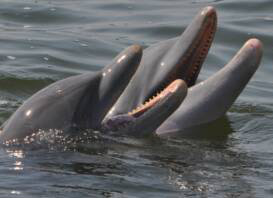
- Feeding behavior is flexible and adapted to a dolphin’s particular habitat and available food resources. Bottlenose dolphins frequently use cooperative hunting strategies for locating and catching prey. Here they are begging and feeding them could cost you a 50k fine… Yes I said $ 50,000.00.
- Hunting strategies are varied and diverse. Bottlenose dolphins often cooperate when hunting and catching fish. In open waters, a dolphin group sometimes encircles a large school of fish and herds the fish into a small, dense mass. The dolphins take turns charging through the school to feed. Occasionally dolphins herd schools of fish against sand bars, shorelines, or mud banks to trap them in shallow water where the fish are easy prey. Dolphins also feed on individual, nonschooling fishes. A bottlenose dolphin may use its tail flukes to flip a fish out of the water, and then retrieve the stunned prey. Bottlenose dolphins often feed in association with fishing operations. Dolphins may accompany shrimp trawls or other fishing vessels and feed on discarded fishes caught incidentally in the nets.
- Dolphins do not chew their food. Before eating large fishes, bottlenose dolphins shake them or rub them on the ocean floor until suitable-size pieces break off. They also strip meat from spiny fishes, reducing the chance of injury from sharp spines.
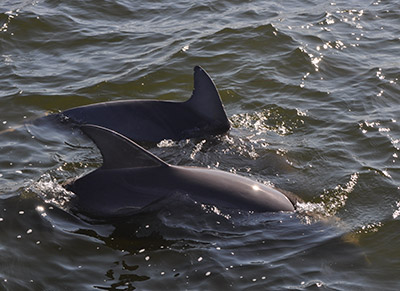
They Live Long Lives Too
- Local Leagend Capt Lorrie AKA the Dolphin Queen says dolphins can live into their 30s.
- I can attest to that as well because my son Wyatt ( is 11) has Named several of the local breeders !
- Chip and Lucy to name a couple !
- Capt Lorrie is Native American here in town and has said that some dolphins live into their late 20s and a few females have even lived past 30.
Gestation
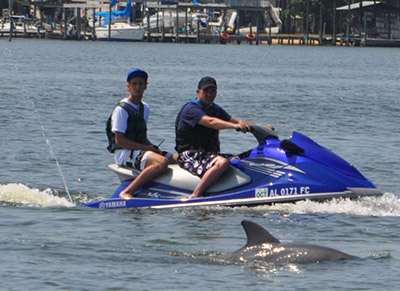
- The gestation period is about 12 months.
- Bottlenose dolphin calves are born after a gestation of about 12 months.
Birth Seasons
- Worldwide, calves are born throughout the year.
- Seasonal calving peaks vary by area. Dolphin births off the coast of Sarasota, Florida occur in late spring to early summer. A secondary peak occurs in early autumn. In waters along the central U.S. Atlantic coast, the prolonged calving season shows a spring peak. In Patagonia and South Africa, births peak in summer. Most dolphin births along coastal Texas waters occur in March. Peak calving for dolphins in Florida’s Indian River Lagoon occurs in April and August. Bottlenose dolphins in the Pacific Ocean along the coast of Southern California have shown a calving peak in the fall.
Frequency Of Birth
A female dolphin can potentially bear a calf every two years, but calving intervals generally average three years.
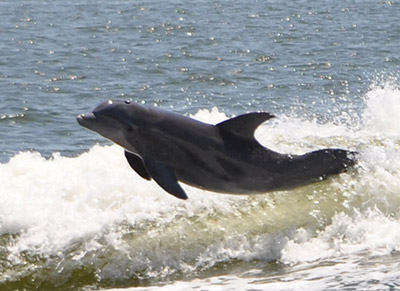
Calving
- Calves are born in the water. Deliveries are usually tail-first, but head-first deliveries are also seen. The umbilical cord snaps during delivery.
- Dolphin calves are born in the water usually tail first.
- Sometimes an assisting dolphin may stay close to the new mother and calf. Although this assisting dolphin often is referred to as an “auntie” dolphin, it may be male or female. This auntie dolphin is often the only other dolphin a mother allows near her calf.
Babies At Birth
- Calves are approximately 39-53 in. long and weigh about 22-44 lbs.
- In the first few days after birth, the calf’s dorsal fin and tail flukes are pliable and lack firmness, but gradually stiffen.
- Calves, darker than adults, show several vertical, light lines on their sides, a result of fetal folding. These lines disappear within six weeks.
- Dolphin calves are usually darker in color than the adults.
Nursing
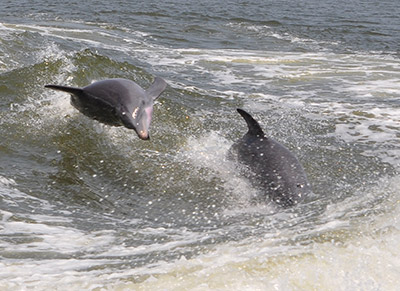 YES THEY NURSE !!! WHY ? I don’t Know !!! But my Son does !!
YES THEY NURSE !!! WHY ? I don’t Know !!! But my Son does !!
According to him…
God knew that there would be feasts and famines and that temporary fixes for, too much rain water in bay environments, hurricanes the flood rivers and release human bacteria that kill their food resources is why they have mammary glands !!!!
The things he teaches me 🙂
- Calves nurse below water, close to the surface. The calf suckles from nipples concealed in abdominal mammary slits. Observations in zoological parks show that nursing usually begins within six hours of birth. A calf nurses as often as four times per hour for the first four to eight days. Each nursing instance usually lasts only about five to ten seconds. A calf nurses three to eight times per hour throughout the day and night. Milk is composed of 33% fat, 6.8% protein, and 58% water, with traces of lactose. The rich milk helps the baby rapidly develop a thick blubber layer. A calf may nurse for up to 18 months.
- In caring for her calf, a mother dolphin stays close by and attentively directs the calf’s movements. The calf is carried in the mother’s “slip stream,” the hydrodynamic wake that develops as the mother swims. This helps the baby swim and enables the mother and calf to stay up with the group.
- There is probably a considerable amount of learning involved in mothering.
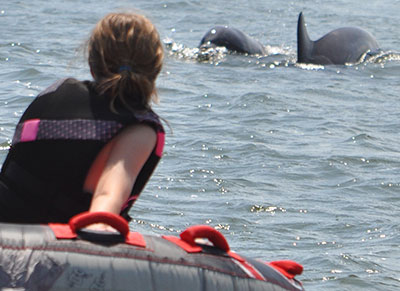 SO IF YOU WANT TO LEARN MORE AND HAVE A BLAST DOING IT
SO IF YOU WANT TO LEARN MORE AND HAVE A BLAST DOING IT
CALL US AR 251 609 3444 AND TELL YOU FRIENDS TO FIND US
@ ORANGEBEACHDOLPHINTOURS.COM
REMEMBER ! WE’RE MORE THAN A BOAT RIDE WE MAKE MEMORIES !
GOD BLESS AND BE SAFE !
CAPTAIN ADRIAN BARBA 🙂
CAPTAIN JACOB STEIGARWALD 🙂
Copyright © 2019 OrangeBeachDolphinTours.com. All Rights Reserved | SEO & Marketing by Paar Media Group
